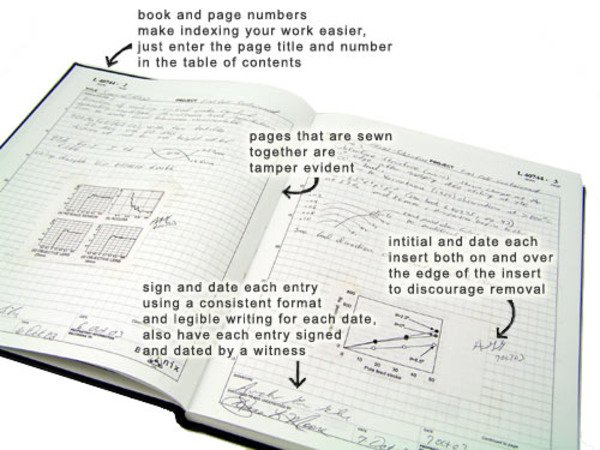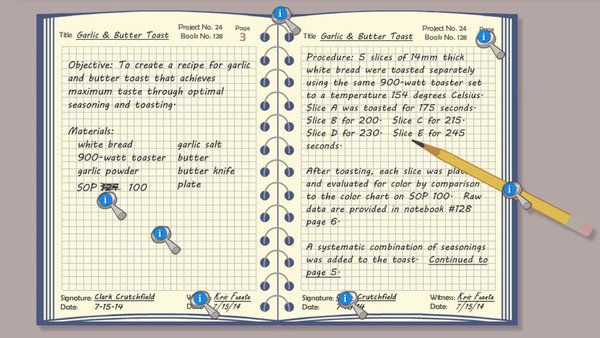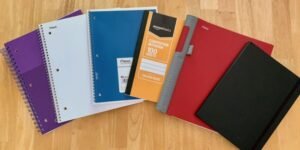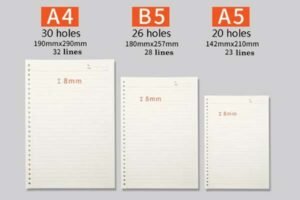
Are your important research notes scattered? Do you worry about proving your findings? A well-kept laboratory notebook1 solves these problems, making your scientific work clear and defensible.
To keep a laboratory notebook, you must meticulously record all experiment details, including dates, procedures, observations, and results, in a permanent, chronological, and attributable manner. This creates a reliable record for reproducibility, patenting, and collaboration.
A lab notebook is more than just a diary of experiments. It's a legal document in many cases. It is the foundation upon which scientific integrity2 is built. Every detail, from the initial hypothesis to the final conclusion, provides a clear trail. This helps others understand, verify, and build upon your work. It also protects your intellectual property. Precise and thorough records are absolutely key for any serious researcher.
Think of your lab notebook as the official story of your research. Each entry should clearly state the purpose of the experiment. It should list all materials and instruments used. The methods should be described so someone else can repeat it. All observations, data, calculations, and conclusions must be included. This diligent practice ensures no critical information is lost over time.
What are the Essential Elements of a Good Laboratory Notebook Entry?
So, you know a lab notebook is important. But what exactly needs to go into each entry to make it truly effective? Let's break it down.
A good lab notebook entry must include the date, a clear title, the experiment's objective, detailed materials and methods, all raw data and observations, data analysis, and conclusions, all signed and dated.

Let's dive deeper into each component:
Title and Date
Every new experiment or significant block of Cwork needs a clear, descriptive title. And, of course, every single entry, or continuation of an entry, must start with the date. This helps you track your progress and organize your findings chronologically.
Objective or Purpose
Why are you doing this experiment? Briefly state the main goal or the question you are trying to answer. This sets the context for everything that follows. For example: "Objective: To determine the melting point of Sample X."
Materials and Methods
This is a critical section. You need to list all materials, chemicals, and equipment used. Be specific. Include supplier names, lot numbers for chemicals, and model numbers for equipment if it's important. Then, describe the step-by-step procedure you followed. It should be detailed enough for another scientist with similar skills to repeat your experiment exactly.
Here's a quick example of how you might list materials:
| Material | Supplier | Lot Number | Quantity Used |
|---|---|---|---|
| Hydrochloric Acid | Sigma-Aldrich | MKBD1234V | 10 mL |
| Distilled Water | Lab Supply Co | N/A | 100 mL |
| Beaker (250mL) | Pyrex | N/A | 1 |
Observations and Raw Data
Record everything you observe during the experiment. This includes colors, smells, temperature changes, instrument readings, measurements, and anything unexpected. Don't filter at this stage; write it all down. Raw data can be tables of numbers, printouts from instruments (securely attached), or sketches.
Calculations and Data Analysis
Show your work. If you perform calculations, write them out clearly. If you use software for analysis, note the software version and the steps taken. Graphs and charts generated should be included, properly labeled, and referenced in the text.
Discussion and Conclusions
What do your results mean? How do they relate to your objective? Were there any problems or sources of error? What are your conclusions based on the data? You might also include ideas for future experiments.
Signature and Witness
Each completed entry or page should be signed and dated by you, the experimenter. In many labs, especially in industry or when intellectual property is a concern, entries are also regularly reviewed, signed, and dated by a witness. The witness should understand the work but not be directly involved in that specific experiment.
What are the Best Practices for Maintaining a Lab Notebook?
Knowing what to write is half the battle. The other half is how you maintain the notebook itself. Certain practices ensure its integrity and usability.
Best practices include using permanent ink, writing legibly, recording entries chronologically as they happen, never removing pages, and correcting errors by neatly striking through and initialing.

Let's explore these practices:
Use Permanent Ink
Always use a pen with permanent, non-erasable ink, preferably black or dark blue. Pencils or erasable inks are a big no-no because entries could be altered or fade over time. This is vital for the notebook's role as a permanent record.
Write Legibly and Neatly
Your notebook needs to be readable by others, and by your future self! Take the time to write clearly. If your handwriting isn't the best, printing might be a good option.
Record Entries Chronologically
Work should be recorded as it happens, or as soon as possible afterward. Don't leave blank pages to fill in later, as this can cast doubt on the timeline of your work. If you start a new page for a new day or experiment, make sure it follows the last entry.
Number Pages Consecutively
Most good lab notebooks, like ours at NotebookRing®, come with pre-numbered pages. If yours doesn't, number them yourself before you start. This ensures no pages can be secretly removed or inserted.
Never Remove Pages
Tearing out pages compromises the integrity of the notebook. If you make a mistake or a page is intentionally left blank, simply draw a single diagonal line across it and add a brief note like "Intentionally Left Blank" with your initials and the date.
Correct Errors Properly
Everyone makes mistakes. When you do, don't use white-out or try to completely obliterate the error. Instead, draw a single, neat line through the incorrect information so it's still legible. Then, write the correction nearby and add your initials and the date. This transparency is key.
Attach Loose Materials Securely
If you have instrument printouts, photos, or graphs, they must be permanently attached to the notebook pages. Use strong glue or acid-free tape. It's also good practice to sign and date across the attached item and onto the notebook page itself, to show when it was added.
Table of Contents
While not a "maintenance" tip for an individual entry, maintaining a table of contents at the beginning of your notebook is incredibly helpful. Update it regularly with experiment titles and page numbers. This makes finding specific information much easier later on.
Paper vs. Electronic Lab Notebooks: Which is Right for You?
In today's digital world, you might wonder if the traditional paper lab notebook is still the best choice. Electronic Lab Notebooks (ELNs) are gaining popularity. So, what's the deal?
Paper notebooks are tangible, easy to use without special software, and have a long history of legal acceptance. ELNs offer advanced search, data integration, and easier collaboration but require infrastructure and security protocols.
Let's look at the pros and cons:
Paper Laboratory Notebooks
Pros:
- Tangible and Familiar: Easy to grab and write in. No batteries or software needed.
- Difficult to Tamper With (if practices followed): Sequentially numbered pages and permanent ink make unauthorized changes hard to hide.
- No Special Training: Everyone knows how to use a pen and paper.
- Legally Established: Widely accepted in patent applications and legal proceedings for decades. Our NotebookRing® notebooks, with durable binding and high-quality paper, are designed for this long-term use.
Cons:
- Data Entry Can Be Time-Consuming: Manually writing everything takes time.
- Searchability is Limited: Finding old data relies on a good table of contents and memory.
- Physical Storage: They take up space and can be damaged by spills or fire.
- Collaboration Challenges: Sharing a physical notebook among a team can be tricky.
Electronic Laboratory Notebooks (ELNs)
Pros:
- Searchability: Easily search by keywords, dates, or other criteria.
- Data Integration: Can often link directly to instruments and databases.
- Collaboration: Multiple users can access and contribute (with proper permissions).
- Automatic Backups: Reduces risk of data loss if systems are set up correctly.
- Audit Trails: Sophisticated ELNs track all changes, providing a clear history.
Cons:
- Cost and Infrastructure: Require software licenses, hardware, and IT support.
- Security Concerns: Data must be protected from hacking, corruption, or unauthorized access.
- Steep Learning Curve: Users may need training to use the software effectively.
- Data Format Obsolescence: Risk that future software won't be able to read old files.
- Validation and Compliance: ELNs used in regulated environments (like FDA or EPA work) need to meet specific validation requirements (e.g., 21 CFR Part 11).
Making the Choice
The best choice depends on your lab's specific needs, resources, and any regulatory requirements. Some labs use a hybrid approach, keeping a paper notebook for primary records and using digital tools for data analysis and sharing. For many, the reliability and proven track record of a high-quality paper lab notebook remain indispensable, especially for work that could lead to patents.
Why Choose NotebookRing® for Your Lab Notebooks?
Now that you understand the importance of a well-kept lab notebook, the notebook itself matters. At NotebookRing®, we've been dedicated to creating ingenious writing tools since 2006. We know what researchers and professionals need.
Our lab notebooks are designed with scientific rigor in mind.
- Durability: We use sturdy covers and strong binding methods like sewing glue binding, ensuring your notes withstand daily lab use. Our pages are often made from 80-120g acid-free paper, which is perfect for permanent ink and resists bleed-through.
- Proper Formatting: Many of our notebooks come with pre-numbered pages, fields for dates, titles, signatures, and witness signatures, saving you setup time. We can customize inner page formats too – grid, lined, or even specialized layouts for specific experimental records.
- Quality Materials: We prioritize materials that last. This includes FSC-certified paper options, reflecting our commitment to sustainability, and durable metal components for any ring-binder style notebooks.
- Customization for Institutions: For educational institutions or large research labs, we offer bulk customization. This can include adding your institution's logo or specific instructional pages. Our experience with providing school badge notebooks (often 50 pages/book with tear-proof reinforcement) meets these needs.
- Reliability: With 18 years of focus on paper stationery manufacturing, we've honed our processes. Our quality control includes checks like paper weight tolerance and binding strength verification, so you can trust your notebook to protect your invaluable data.
When your research demands a permanent, reliable record, NotebookRing® provides the quality physical notebook you need.
Conclusion
Keeping a detailed and accurate laboratory notebook is essential for good science. It ensures reproducibility, protects intellectual property, and forms the backbone of your research findings. Embrace these practices.





